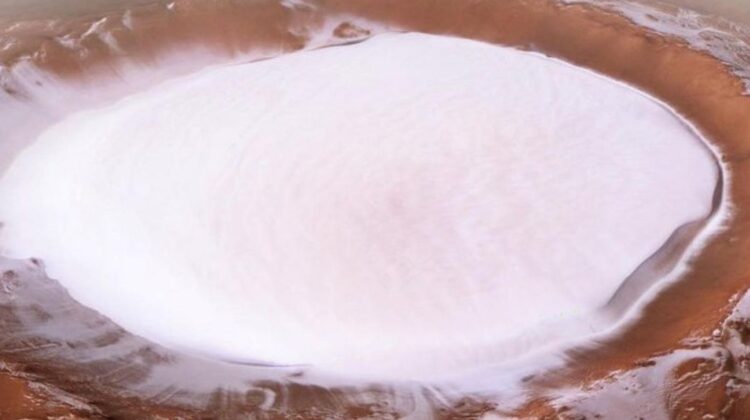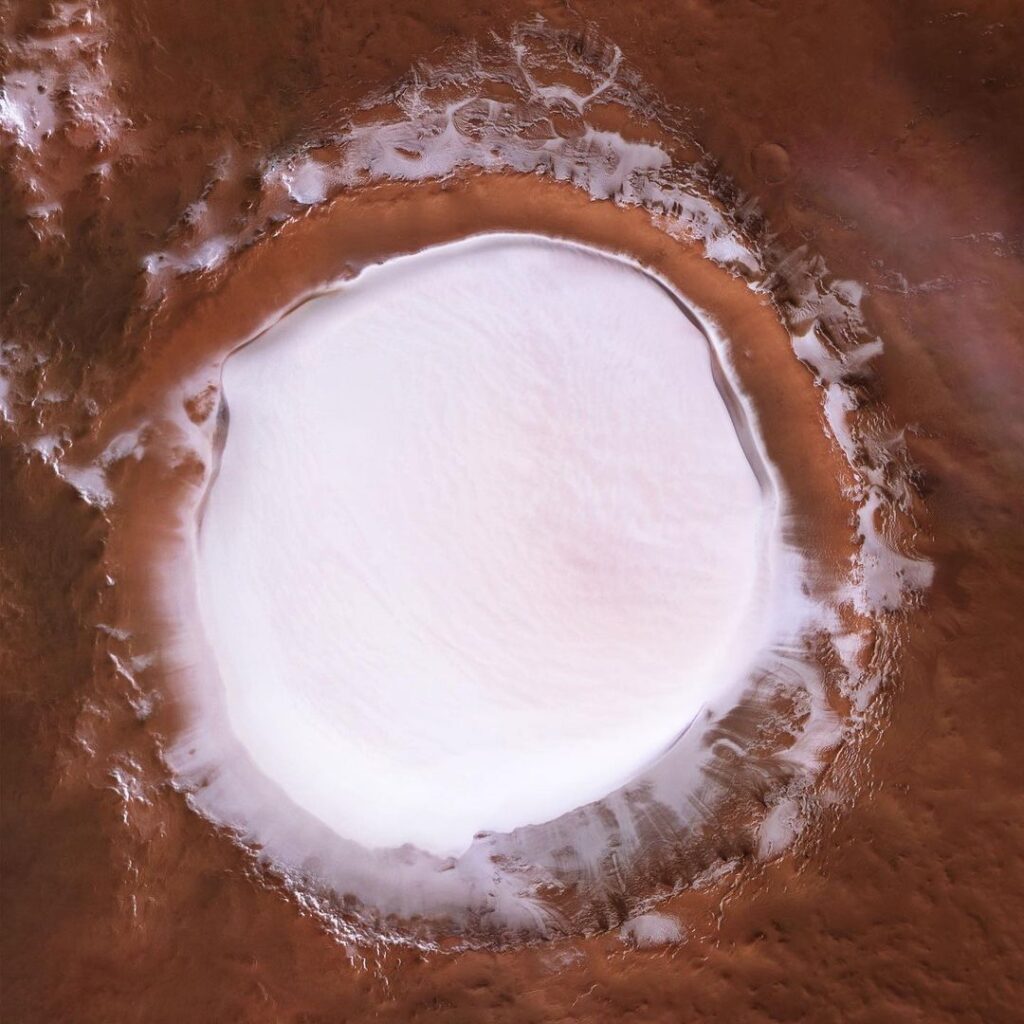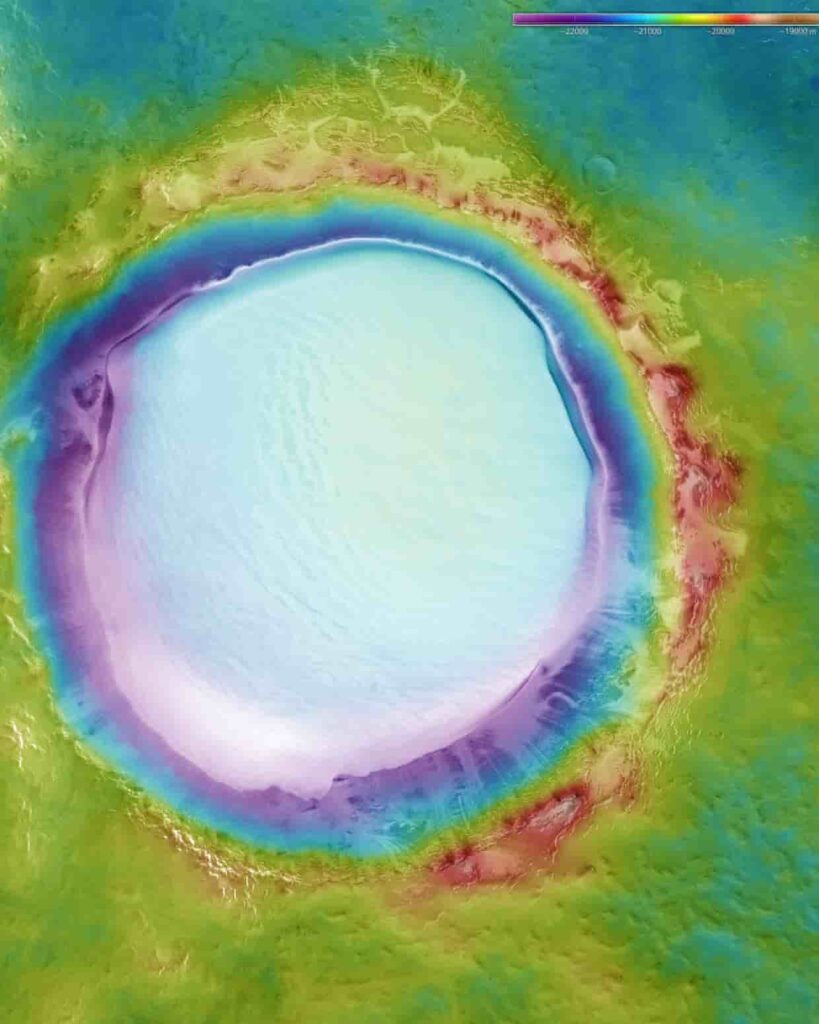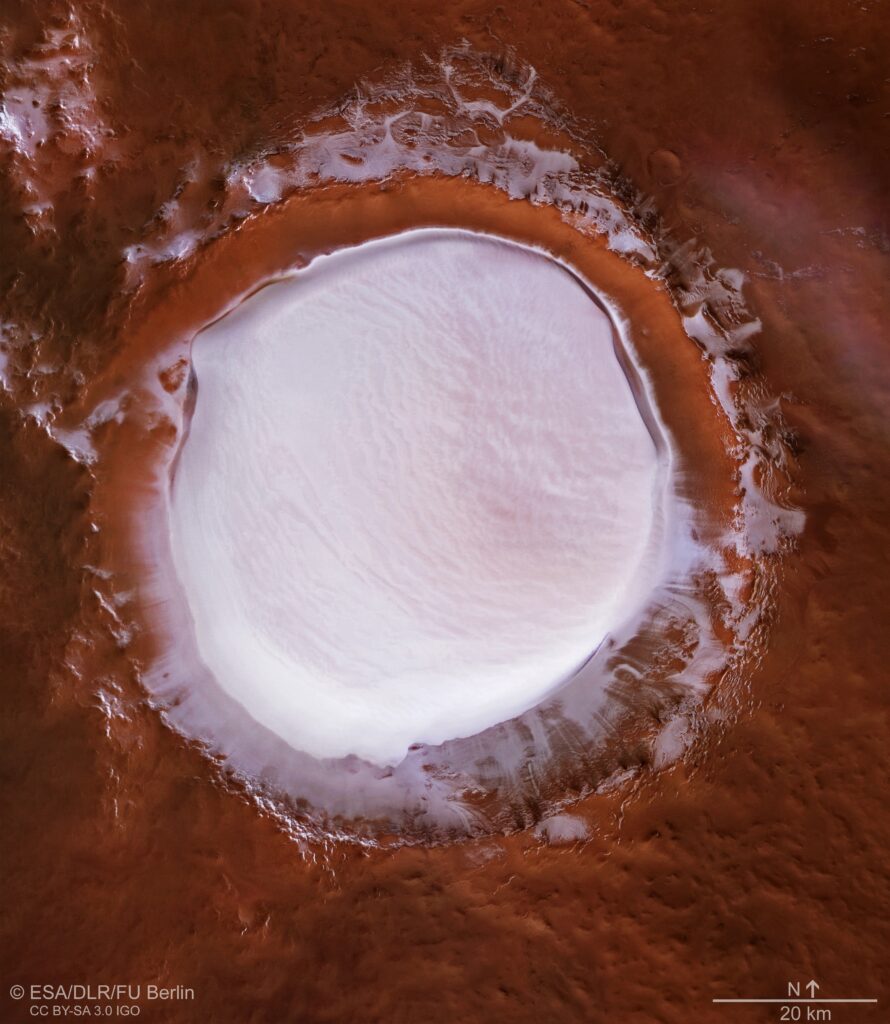
The European Space Agency’s Mars Express probe has captured stunning photos of a massive crater on Mars that is full of ice. The images reveal the Korolev crater, which is located in the northern lowlands of Mars and is approximately 50 miles wide.

The Korolev crater is particularly interesting because it contains a massive deposit of water ice that is estimated to be more than 1.1 miles thick at its deepest point. The ice is thought to have accumulated over millions of years, as water vapor in the Martian atmosphere freezes and falls to the surface of the planet.
The new images captured by the Mars Express probe reveal the detailed structure of the Korolev crater and its surrounding terrain. The photos show a central pit in the middle of the crater, which is surrounded by a ring of icy material that is several miles wide. The icy material is composed of multiple layers, which scientists believe are the result of the accumulation of ice over time.

The Korolev crater is named after Sergei Korolev, a pioneering Russian rocket scientist who is often referred to as the father of the Soviet space program. Korolev was instrumental in developing the first Soviet satellites, including the Sputnik 1, which was the world’s first artificial satellite.
The discovery of water ice on Mars is an important finding because it could provide a crucial resource for future human missions to the planet. Water is essential for life as we know it, and having access to water on Mars could make it possible to establish a permanent human presence on the planet.

The new images captured by the Mars Express probe are a testament to the incredible technological advancements in space exploration. They reveal a stunning view of a remote corner of our solar system and provide new insights into the geological and atmospheric processes that have shaped the Martian landscape.

In conclusion, the discovery of a massive deposit of water ice in the Korolev crater on Mars is a remarkable achievement of space exploration. The images captured by the Mars Express probe provide a detailed view of this fascinating geological feature and offer new insights into the potential for future human missions to Mars.

Leave a Reply